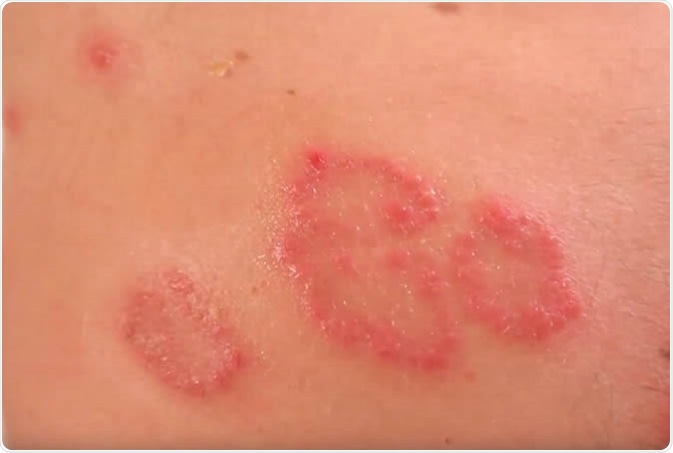Site Under Development, Content Population and SEO, Soft Launch 1st January 2020
Nummular dermatitis, also known as nummular eczema or discoid eczema, is a long-term skin condition involving the development of small circular lesions on the skin.
This disorder, which is a form of eczema, is typically characterized by coin-shaped spots on the skin. The name derives from the Latin word for coin, nummularius.
Aside from the circular shape of lesions that present on the skin, other symptoms of nummular dermatitis can vary significantly from person to person. Although this disorder is not contagious and therefore cannot be transferred by direct contact of the skin, its symptoms can be very uncomfortable with the lesions often becoming itchy, cracked, painful and swollen.

The most common symptoms of nummular dermatitis are:
The first sign of nummular dermatitis is typically a small group of itchy, red bumps on the skin that resemble a common rash or insect bite. As the disorder develops, the spots rapidly merge together to form large patches of itchy, dry and crusty skin which can range from a few millimeters in size to several centimeters.
Areas of the body most commonly affected by nummular dermatitis are the torso, arms and legs. However, it is possible for the lesions to develop nearly anywhere in the body, with some slightly less-common areas including the hands, feet and scalp.
Usually only one area of the body will develop patches of nummular dermatitis at any one time, however in some cases several patches in different areas may be present simultaneously.
Nummular dermatitis can affect people of any age.
This condition develops more commonly in men than in women, however the reason for this is not yet well understood. Whilst males typically show their first symptoms between the ages of 55 and 65, the disorder tends to occur far earlier in women, who usually show their first symptoms during their teenage years or young adulthood.
It is possible for infants and young children to develop nummular dermatitis; however such cases are very rare.
There is currently no known cause for nummular dermatitis. However, some factors can increase the risk of developing this condition. These include:
Nummular dermatitis can be diagnosed by a healthcare professional. They will do this by inspecting the skin, finding out about the patient’s medical history, and may require a small sample of the skin to be analyzed in the lab.
Due to the wide range of symptoms that can occur in this disorder, it is easy to mis-interpret nummular dermatitis as a different skin condition. This is why it is very important to get an accurate diagnosis from the doctor if you think you may have nummular dermatitis.
Nummular dermatitis is often mistaken for other types of eczema, such as atopic eczema or contact dermatitis, which also cause the skin to become dry, irritated and inflamed. In addition, this skin condition also bears many similarities to ringworm. Ringworm is a common skin infection caused by fungus, which mainly presents with a circular shaped rash that is red, itchy and scaly. Performance of a fungal culture can be conducted by a healthcare professional in order to rule out ringworm as the cause for any skin complaints.
Lesions caused by nummular dermatitis can become infected. Patches of this condition that are infected are harder to treat, more likely to recur and may leave a lasting scar on the skin. Therefore, it is very important to seek medical attention if you may have nummular dermatitis that is infected. Some signs of infection include heaving amounts of oozing, yellow crusting or fluid, increasing pain, swelling and heat, and feeling generally unwell with nausea, chills and fever.